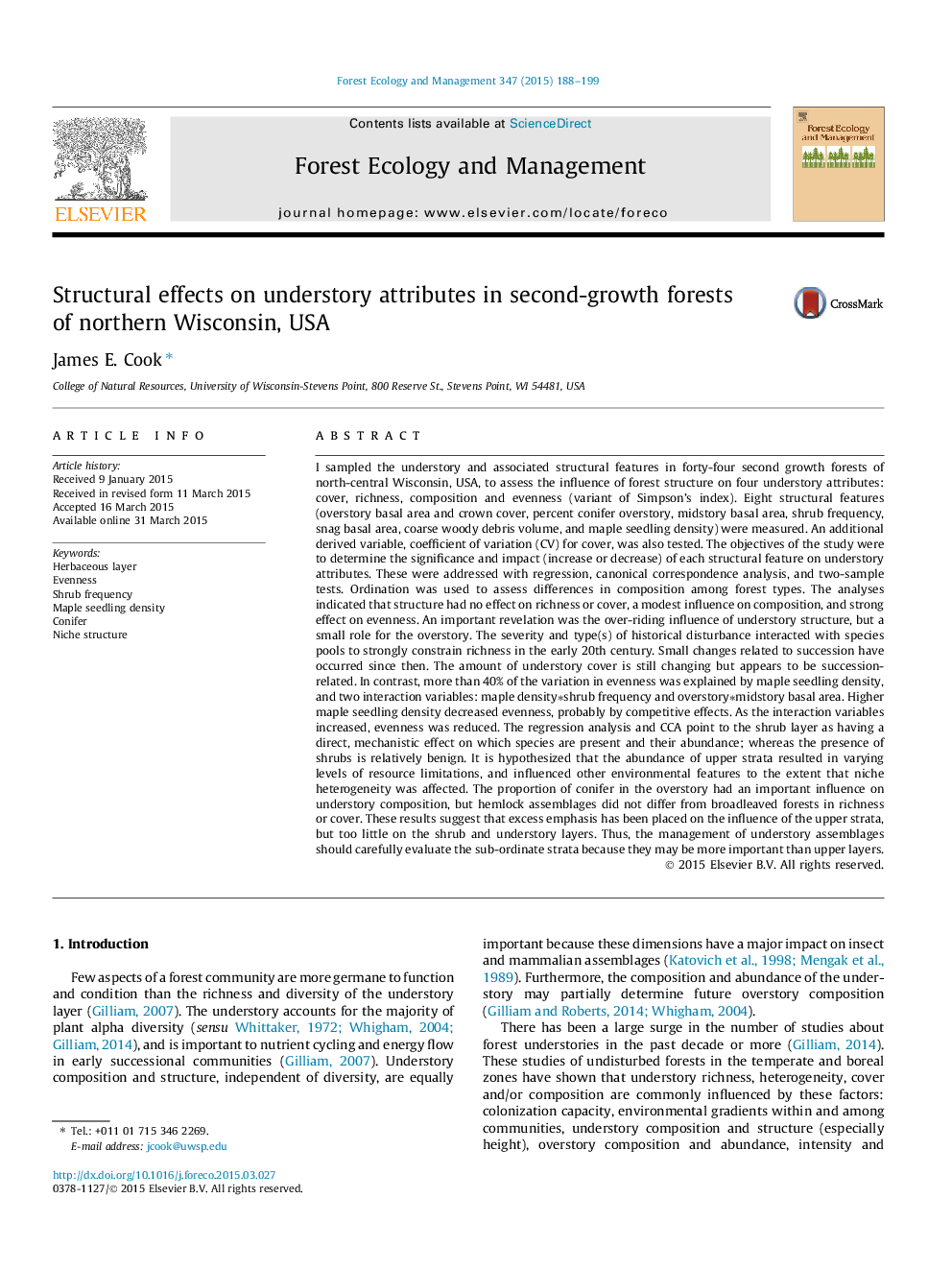| کد مقاله | کد نشریه | سال انتشار | مقاله انگلیسی | نسخه تمام متن |
|---|---|---|---|---|
| 86257 | 159174 | 2015 | 12 صفحه PDF | دانلود رایگان |
• Forest structure had no effect on richness or cover.
• Conifers in overstory and woody understory had a significant influence on understory composition.
• Understory structure had strong and significant effects on evenness of the understory.
I sampled the understory and associated structural features in forty-four second growth forests of north-central Wisconsin, USA, to assess the influence of forest structure on four understory attributes: cover, richness, composition and evenness (variant of Simpson’s index). Eight structural features (overstory basal area and crown cover, percent conifer overstory, midstory basal area, shrub frequency, snag basal area, coarse woody debris volume, and maple seedling density) were measured. An additional derived variable, coefficient of variation (CV) for cover, was also tested. The objectives of the study were to determine the significance and impact (increase or decrease) of each structural feature on understory attributes. These were addressed with regression, canonical correspondence analysis, and two-sample tests. Ordination was used to assess differences in composition among forest types. The analyses indicated that structure had no effect on richness or cover, a modest influence on composition, and strong effect on evenness. An important revelation was the over-riding influence of understory structure, but a small role for the overstory. The severity and type(s) of historical disturbance interacted with species pools to strongly constrain richness in the early 20th century. Small changes related to succession have occurred since then. The amount of understory cover is still changing but appears to be succession-related. In contrast, more than 40% of the variation in evenness was explained by maple seedling density, and two interaction variables: maple density∗shrub frequency and overstory∗midstory basal area. Higher maple seedling density decreased evenness, probably by competitive effects. As the interaction variables increased, evenness was reduced. The regression analysis and CCA point to the shrub layer as having a direct, mechanistic effect on which species are present and their abundance; whereas the presence of shrubs is relatively benign. It is hypothesized that the abundance of upper strata resulted in varying levels of resource limitations, and influenced other environmental features to the extent that niche heterogeneity was affected. The proportion of conifer in the overstory had an important influence on understory composition, but hemlock assemblages did not differ from broadleaved forests in richness or cover. These results suggest that excess emphasis has been placed on the influence of the upper strata, but too little on the shrub and understory layers. Thus, the management of understory assemblages should carefully evaluate the sub-ordinate strata because they may be more important than upper layers.
Journal: Forest Ecology and Management - Volume 347, 1 July 2015, Pages 188–199
